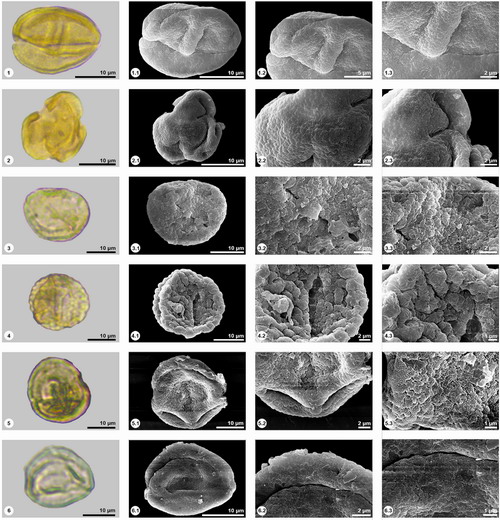The India-Asia continental collision shaped the Cenozoic geology of south and east Asiaand monsoon intensification across Asia. The confluence of habitat variability and monsoons caused by the India-Asia collision has contributed to high levels of biodiversity in this region. Quantitative reconstructions of palaeovegetation and palaeoclimate during the Cenozoic are critical to understanding links between vegetation dynamics and the changing monsoonal regime. Prof. ZHOU Zhekun and his team of Xishuangbanna Tropical Botanical Garden (XTBG), cooperated with international colleagues, have conducted a study to better understand vegetation dynamics and the Asian monsoonal climate in the Neogene. They reconstructed the vegetational succession and climate of Wenshan basin in southwestern China during the late Miocene (11.62–5.33 Ma). They used newly available palynological data and the results of a quantitative bioclimatic analysis. The late Miocene palynoflora in Wenshan basin resembles that of modern evergreen broadleaf vegetation in subtropical East Asia. Based on pollen elements and reconstructed palaeoclimates in 72 samples, they found the composition of the vegetation in the Wenshan basin fluctuated during the late Miocene and was likely driven by natural climate variability. Quantitative estimates suggest that the mean annual temperature (MAT) ranged from 16.6 to 17.5 °C; the mean annual precipitation (MAP) was ~ 1500 mm; and the monsoon intensity index (MSI) ranged from 11.3 to 17.1. Our results indicate that the Wenshan basin experienced a warm, wet, and temperate to subtropical climate. By comparing with other late Miocene sites in Yunnan, the study showed that temperatures differed slightly from region to region and, overall, annual and seasonal precipitation levels were higher in the late Miocene than at present, but with a weaker monsoon intensity than in the Wenshan basin today. The study entitled “Late Miocene vegetation dynamics under monsoonal climate in southwestern China” has been published online in Palaeogeography, Palaeoclimatology, Palaeoecology. 
Photos of fossil pollen from Wenshan sediments. 1, 2, 3, 4. Quercus. 5, 6. Cyclobalanopsis. 
Reconstruction of vegetation and succession history in Wenshan, Yunnan, SW China. (Images by LI Shufeng) |


